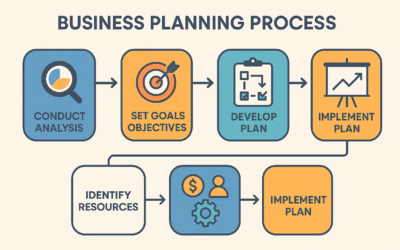After the daunting but rewarding challenge of starting a small business, employers may want to grow their firm from the beginning stages. This will involve attracting the best employees possible. Business owners need to realize that a benefits package is just as important as traditional compensation for many applicants.
Putting together a benefits package for a small business might seem difficult at first, but the internet has streamlined the process and left a clear protocol to follow. These steps can lead to a happy, healthy work environment for both the business owner and his or her employees.
While a tiring process, business owners will once again have to decide the budget for a specific project. Fortunately, an owner will likely be all too familiar with this process once it’s time to establish a benefits program.
The term “benefit” is very flexible in the business world. It involves anything that is provided to an employee apart from traditional compensation. Technically speaking, temporal assets such as company clothing or firm-provided meals are considered benefits.
These temporal benefits are the cheapest for an employer to supply but are often the least sought-after by job applicants. Most employees in the United States are looking for insurance in their benefits packages. This can vary from medical, dental, to vision insurance guarantees. These benefits are the most attractive to high-value employees, but they also need the most planning by an employer.
Health insurance in the United States will typically cost an employer at least 500 dollars per month per employee. This is the most expensive but also most attractive benefit to most job applicants.
Other health benefits such as vision or dental will usually only cost 10 to 20 dollars per employee per month, but they can be very enticing to skilled employees in addition to a traditional wage.
Work-life balance programs such as a strong paid-time-off system can let employees know that you care about their well-being outside of work. Advertising a given vacation program can go a long way in letting applicants know that you value their worth and have a respectful work culture.
Industries that often employ young people who are just starting to have children will be ecstatic to hear about maternal or paternal leave protocols. Happy employees are productive employees, especially when they know how much their managers care about their having enough time to grow their families outside of the workplace.
While discussing benefits with employees and/or applicants outside of traditional compensation, business owners should lump all these factors into a total “employee cost” for cost-analysis purposes. This will help owners to know how much they can budget on wages and employee benefits both when hiring and as a general operating expense. Firms that offer lower wages, but a myriad of benefits can be deceptively expensive to use if managers are not factoring in these expenses as a literal dollar amount.
Professional Employer Organizations (PEOs) can be an excellent possibility for small businesses that don’t have the time or resources to operate an in-house HR department. These firms will often find a helpful rate for many benefits packages after a brief questionnaire detailing the business’s scope of operation and the range of helps the owner can afford and/or would like to provide. The internet has made this an increasingly popular choice as there isn’t any need to be near a physical agency.
The other option is for owners to deal with healthcare/medical/dental providers directly. This is only a practical choice for very meticulous individuals who want to make sure that they are in direct control of every aspect of their employees’ benefits packages. Most small businesses would be best served by hiring a PEO when preparing benefits for their employees.
Small business owners looking to take the next step and attract top talent by offering benefits may be intimidated at first, but the process is not nearly as daunting as insurance calculations might make it seem. Entrepreneurs simply need to decide upon a budget and decide what benefits they’d like to provide. Some might want to contact insurance companies directly, but PEOs in the digital age are often able to secure very favorable rates, leaving all parties satisfied and ready for work.
No matter how you decide to go about designing your benefits program, Global Resources is determined to help you plan and execute all aspects of your small business aspirations.

0 Comments